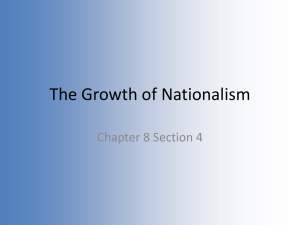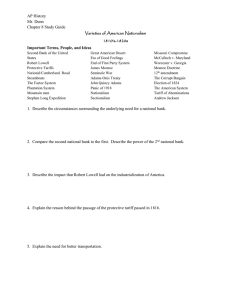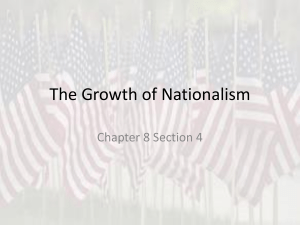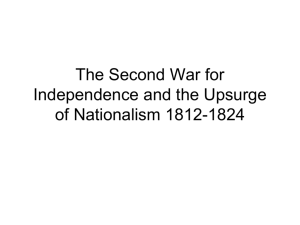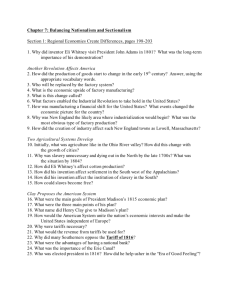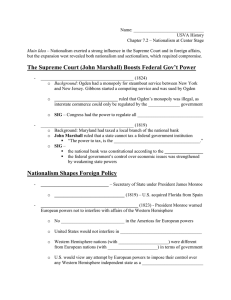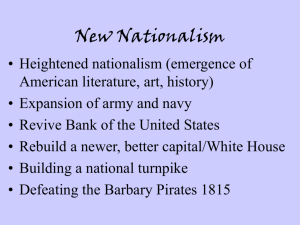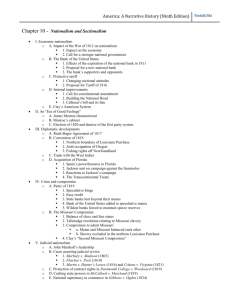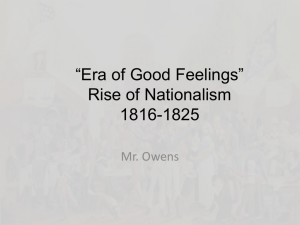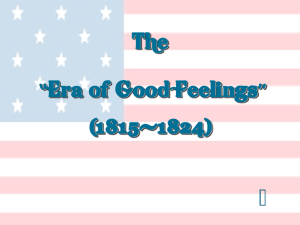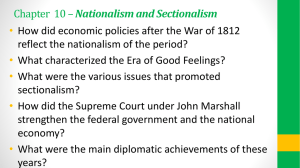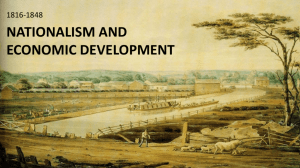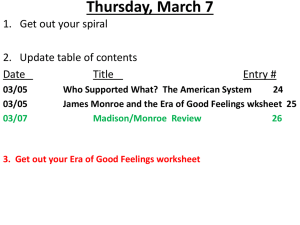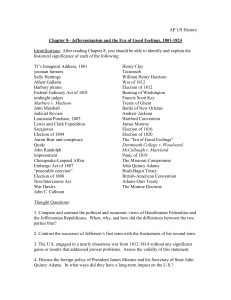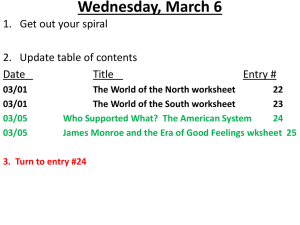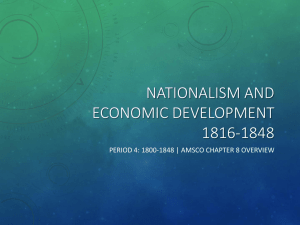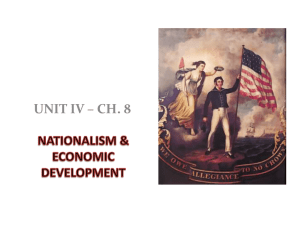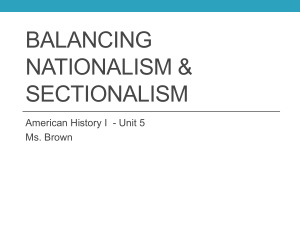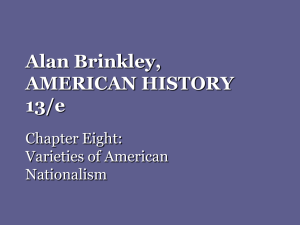APAH Name: Reading Guide Chapter 8 Directions: After reading
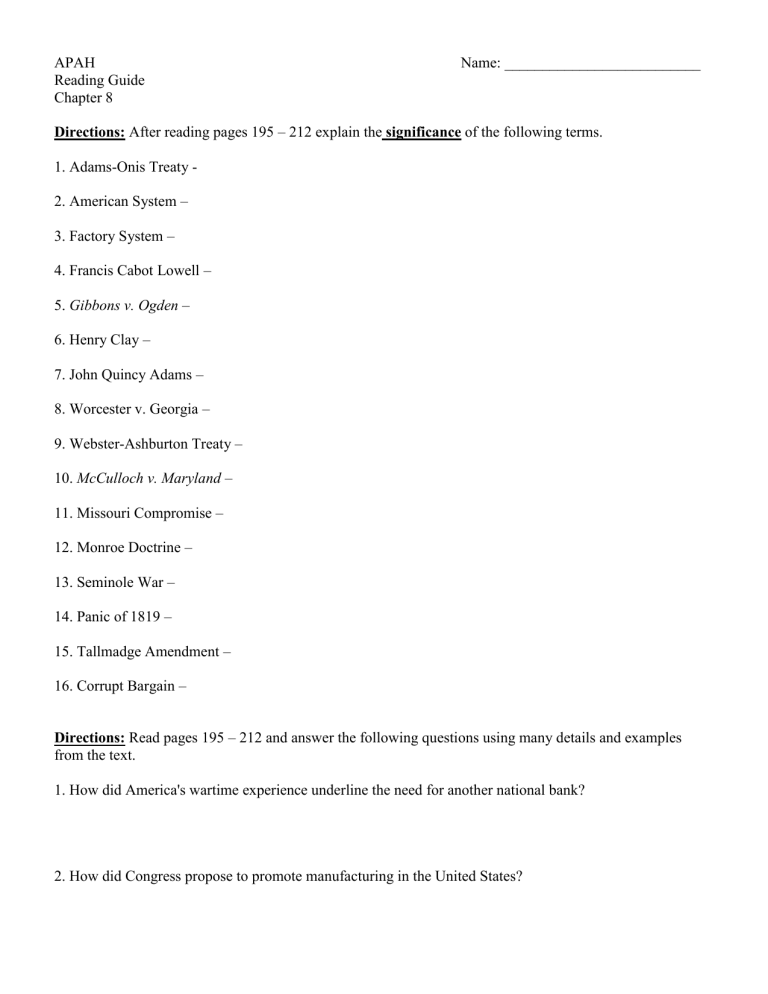
APAH
Reading Guide
Chapter 8
Name: __________________________
Directions: After reading pages 195 – 212 explain the significance of the following terms.
1. Adams-Onis Treaty -
2. American System –
3. Factory System –
4. Francis Cabot Lowell –
5. Gibbons v. Ogden –
6. Henry Clay –
7. John Quincy Adams –
8. Worcester v. Georgia –
9. Webster-Ashburton Treaty –
10. McCulloch v. Maryland –
11. Missouri Compromise –
12. Monroe Doctrine –
13. Seminole War –
14. Panic of 1819 –
15. Tallmadge Amendment –
16. Corrupt Bargain –
Directions: Read pages 195 – 212 and answer the following questions using many details and examples from the text.
1. How did America's wartime experience underline the need for another national bank?
2. How did Congress propose to promote manufacturing in the United States?
3. How was transportation improved during this period? What serious gaps remained in the nation's transportation system?
4. What were the reasons for the so-called Great Migration?
5. What were the characteristics of life among white settlers in the Old Northwest?
6. How did life in the Old Southwest differ from that in other sections of the country?
7. Who were the "mountain men"? Why were they important in the settlement of the West?
8. Explain the perception that easterners had of the West.
9. Why were the leaders of New England disturbed at the nomination end election of James Monroe for president, and what did Monroe do to calm these fears?
10. Why was Florida such a problem for Americans in the South, and how did Andrew Jackson make the resolution of the problem an absolute necessity?
11. What were the critical points decided by the Adams-Onís negotiations?
12. What were the causes of the Panic of 1819?
13. What were the major elements of disagreement in the debate over the admission of Missouri into the
Union?
14. What was the Missouri Compromise?
15. What was the net effect of the opinions delivered by the Marshall Court? How did these opinions reflect
John Marshall's philosophy of government?
16. What was the long-range significance of the case of Gibbons v. Ogden ?
17. How was it that the United States' proclamation of neutrality in the wars between Spain and its colonies actually aided the colonies? Why did the United States do this?
18. Who were the candidates in the election of 1824? What was the platform of each?
19. What was the outcome of the election of 1824? How was that result arrived at, and what part did Henry
Clay play in it?
20. What was the "corrupt bargain," and why did it take place?
21. What did John Quincy Adams plan to accomplish during his presidency? Was he successful? Why or why not?
22. What problems brought on the tariff debates of 1827 and 1828? What was the outcome of these tariff debates, and why was it that few were pleased with these results?
23. How had Andrew Jackson's supporters prepared for the election of 1828? What were the issues in the campaign, and what was the outcome?
24. Who were the National Republicans? Who were their leaders? What programs did they support, and from what areas did they draw their strength?
25. To what extent did the War of 1812 create an expanding economy?
26. Explain why westward movement was the most important development of the 19 th
century.
27. How did the term “Era of Good Feelings” reflect the rising spirit of nationalism? Did the phrase become more of a political, economic, or social spirit? Why?
28. How did the federal government promote nationalism and economic growth?
29. What role did nationalism play in the development of the United States? What role had sectionalism played? How did nationalism affect the American Indian relations in the West?
30. Who were the opponents of federal involvement in stimulating the growth of industry in the United
States and why?
31. How did the Supreme Court reinforce nationalism with its rulings in McCulloch v. Maryland, Fletcher v.
Peck, Dartmouth v. Woodward, Cohens v. Virginia and Gibbons v. Ogden ?
32. Continuity and Change over Time : Was the Monroe Doctrine a continuation of the ideals espoused in
George Washington’s Farewell Address regarding “entangling alliances” or was it a departure from those ideals? Explain.
33. Use the chart below and choose several events that demonstrate the role the federal government took to stimulate the growth of banking, shipping, farming, industry, and transportation. Be sure to include the date of each event.
